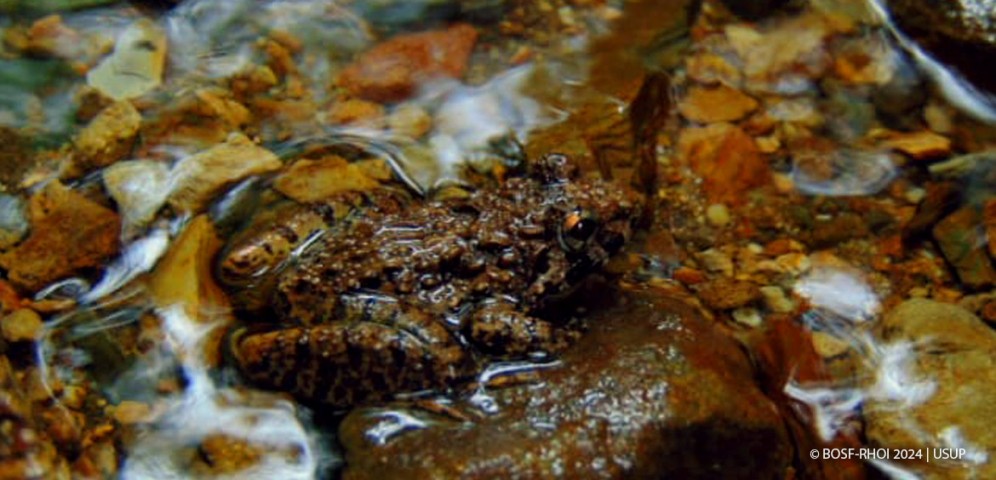08 Jan, 2024
FINCH'S WART FROG
BIODIVERSITY
The Finch's wart frog (Limnonectes finchi) belongs to the order of Limnonectes and is in the Dicroglossidae family. This toad has a small and slender body with long hind legs. It’s also has a head shape tapering forward with a firm accent on it’s thighs. Males range between 25 mm, while females can measure up to 30 mm.
The surface of its body and legs is covered with small round warts. Additionally, the toad's back is orange or yellow with brown patterning. The Finch’s wart frog parental care: male frogs guard eggs and carry the tadpoles to small rain pools on the forest floor where the rest of larval development occurs, laying its eggs in water to allow the tadpoles to develop before undergoing metamorphosis into adult toads.
Read also: GREEN CRESTED LIZARD: A SKILLED CONCEALER
This finch’s wart frog is a terrestrial species commonly found in tropical Bornean rainforests, including humid lowland areas. These toads are endemic to Borneo, meaning they are only found on this one island. Even within Borneo, their distribution is very limited as they have only been recorded in a few areas of Central Kalimantan, West Kalimantan, and Sarawak.
Currently, the conservation status of this toad is categorized as Least Concern according to the International Union for Conservation of Nature (IUCN). However, all amphibians, including toads, face various threats in natural ecosystems, including habitat loss, pollution, and diseases such as the chytrid fungus, which poses a significant threat to wild toads. Many species are under conservation concern as researchers and conservationists strive to better understand and protect them.
Text by: Communication Team, BOS Headquarters, Bogor, West Java




